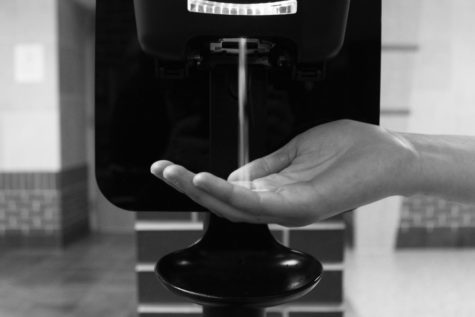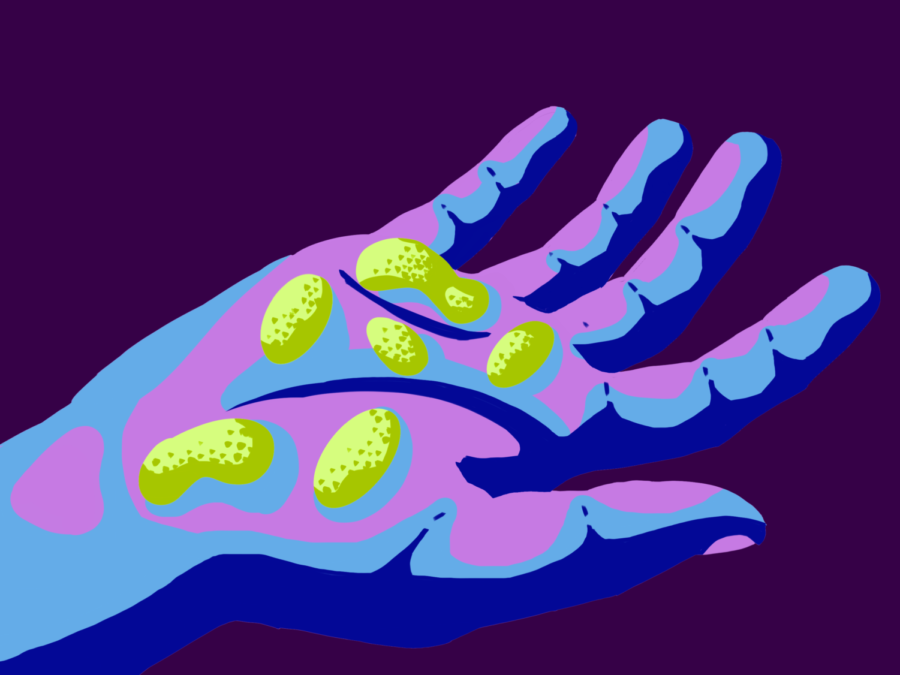The 0.01%: Hand Sanitizer Pumps Placed Around School
November 22, 2019
While with the holiday season comes sweater weather, an unwelcome guest tags along: the flu.
Last year, over 2,500 people in Minnesota were hospitalized with influenza. It makes sense, then, that during this time of year people should be more conscious of their disinfecting efforts. To that end, the school has put up new hand sanitizing stations around the school. But does hand sanitizer really help as much as we think it does?
Hand sanitizers often boast that they kill “99.99% of germs,” and the phrase is so widespread that it has spawned both memes and contemplation. What about that other 0.01%? Are we breeding super-bacteria?
It turns out that alcohol-based antiseptics like Germ-X do not. According to the Center for Disease Control, as long as the alcohol in the sanitizer has a volume concentration of above 60%, the bacteria are killed so quickly and the alcohol evaporates so readily that bacteria do not have the opportunity to develop a resistance to it. The number one creators of super-bacteria are actually antibiotics.
In regards to the usefulness of consumer hand sanitizers, the U.S. Food And Drug
Administration (FDA) said that, “these products have not yet been shown to be more ef
-fective at preventing illness than plain soap and water.”
These alcohol-based hand sanitizers have been found to be most effective in their ability to prevent seasonal flus, colds, and other viral and bacterial-based diseases. Hand sanitizer can only really destroy the influenza virus, but may not completely kill other kinds of viruses.
In other words, consumer antiseptics aren’t better than washing your hands, so if you have the chance to use soap and water, take the opportunity.
Utilizing the more traditional hand-washing method of killing bacteria is consistently successful because water is a natural emulsifier, which in this case means that the dirt and germs that are usually confined to the skin’s natural oils become suspended in the water accompanying the soap. This makes it possible for them to be rinsed off the skin more easily.
But by all means, if you’re running to class and don’t have time to go to the restroom and wash with soap after coming into contact with germs on doorknobs and desks all day, grab some Germ-X.
Ellen McRae, ‘20, often keeps hand sanitizer with her “because it’s a great way to stay healthy when [she’s] at school all day.”
At Minnetonka High School, new hand sanitizer pumps were placed earlier in November in various locations around the school. These pumps were integrated into the school as a result of student feedback from the Principal Advisory Council in order to fight the common illnesses easily spread in a highly-trafficked setting like high school.
Even though using hand sanitizer and washing hands are the most effective ways to stop contamination from diseases, other ways to slow the spread of infection include getting the proper vaccine, staying away from other people when sick, using single-use tissues, and not sharing cups or utensils.
This is extremely important because as McRae said, “the only thing more innovative than high schoolers are the diseases they carry.”
Make sure to keep sentiments like that one in mind this season so you can enjoy the snow and the holidays while flu-free.
Photo courtesy of Emil Liden






























